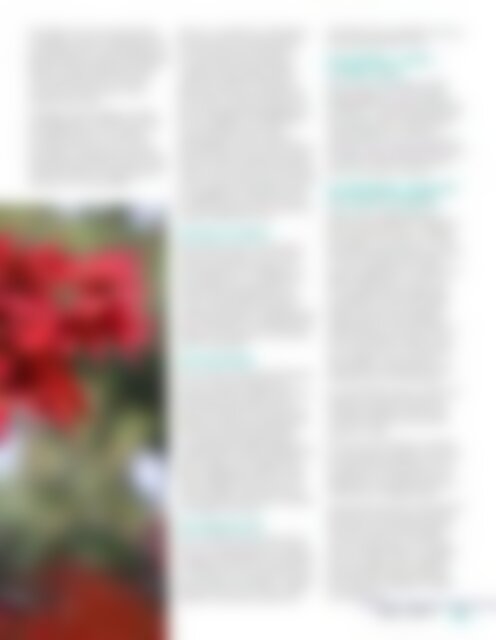NZPhotographer Issue 19, May 2019
As of December 2022, NZPhotographer magazine is only available when you purchase an annual or monthly subscription via the NZP website. Find out more: www.nzphotographer.nz
As of December 2022, NZPhotographer magazine is only available when you purchase an annual or monthly subscription via the NZP website. Find out more: www.nzphotographer.nz
You also want an ePaper? Increase the reach of your titles
YUMPU automatically turns print PDFs into web optimized ePapers that Google loves.
My belief is that an image being<br />
‘Instagram-worthy’ takes away the<br />
pure enjoyment of photography as<br />
people follow popular and modern<br />
trends in order to get likes rather<br />
than taking photos to capture<br />
moments, record history, and<br />
express their views.<br />
It is great to be inspired by other<br />
photographers or artists work that<br />
we admire and try to achieve<br />
the same level in our own work,<br />
but there is something wrong with<br />
replicating someone’s work or style<br />
just for the sake of it getting lots of<br />
attention on social media.<br />
Since I’m a huge fan of breaking<br />
the rules (from a creative point<br />
of view obviously!) I always try<br />
to consciously do something<br />
“wrong” when taking a photo<br />
whilst still making it look good.<br />
Subconsciously it is quite hard to<br />
do since (no matter whether you<br />
are a self-taught photographer or<br />
have a degree in photography)<br />
your mind knows you have<br />
some general rules to follow in<br />
photography e.g. the rule of thirds.<br />
Even our team of photo reviewers<br />
at Excio recommend following the<br />
rules in most cases as you can read<br />
on our blog but I decided to look<br />
at suggestions of when and how<br />
it’s ok to break the rules, being the<br />
creative rebel that I am!<br />
THE RULE OF THIRDS<br />
We’re told to have 1/3 sky and<br />
2/3 land or 2/3 sky and 1/3 land<br />
and to position the subject on<br />
the intersection of “invisible lines”<br />
horizontally and vertically not<br />
in the centre. Breaking the rule<br />
means capturing the moment,<br />
capturing emotions, experimenting<br />
with composition, and putting the<br />
subject in the centre of the frame<br />
when it feels right.<br />
THE HISTOGRAM<br />
We’re told to check the histogram<br />
so as to check the light and<br />
exposure before taking the photo.<br />
We’re told to bracket so as to<br />
get all the lights and all the darks<br />
perfectly captured. Breaking the<br />
rule means trying purposefully<br />
to overexpose/underexpose to<br />
create a fine art piece. Experiment<br />
with the light, shoot against the<br />
light, challenge yourself to shoot<br />
at the brightest time of day with<br />
direct sunlight and see how you<br />
can break the rules whilst creating<br />
an image that works.<br />
THE HORIZON LINE<br />
This is the first thing we get told to<br />
fix on an image when our horizon<br />
is tilting to one side but it is possible<br />
to break the rule and create your<br />
own horizons on purpose. I recently<br />
learned about the ‘Dutch Angle’<br />
thanks to our photo reviews on<br />
the blog and is something I’m now<br />
trying to experiment with.<br />
USE A TRIPOD – AVOID<br />
CAMERA SHAKE<br />
Sure, most of the time we want<br />
sharp images, but what about<br />
breaking the rule and jumping up<br />
and down or spinning around with<br />
the shutter open to purposefully<br />
create blurred, out of focus<br />
photos? This is how we create art!<br />
As long as they captured what you<br />
wanted to tell and they tell your<br />
story as you see it, go for it!<br />
FILL THE FRAME – FOCUS ON<br />
THE CENTRE OF INTEREST<br />
Here comes a great piece of<br />
advice from Abraham Maslow on<br />
how to break this rule... “Enlarge<br />
the object. Or, squint at it so you<br />
see only general outlines. Or, gaze<br />
at it from unexpected angles,<br />
such as upside down. Look at the<br />
object reflected in a mirror. Put<br />
it in unexpected backgrounds…<br />
or through unusual colour filters.<br />
Gaze at it for a very long time.<br />
Gaze while free-associating or<br />
daydreaming.” His main theory is<br />
that by framing the object, you<br />
cut it away from its surroundings<br />
and, thereby, from common<br />
“perceptions, expectations and<br />
theories of how it should look.”<br />
So, next time you go out with your<br />
camera with the main goal of<br />
taking that perfect shot to post<br />
on social media for everyone’s<br />
approval, stop!<br />
You put a lot of stress on yourself<br />
by wanting the ‘perfect’ shot and<br />
if (when) something doesn’t go<br />
as planned or as good as you’d<br />
hoped you can quickly lose your<br />
motivation for taking photos.<br />
If you just go out for a walk without<br />
planning or expecting anything,<br />
but have your camera ready to<br />
capture whatever is awaiting<br />
you in the big world, you will see<br />
that the magic starts to happen!<br />
Let your passion and creativity<br />
shine through without following<br />
the crowd of ‘Instagram-worthy’<br />
photographers.<br />
<strong>May</strong> 20<strong>19</strong><br />
53


















